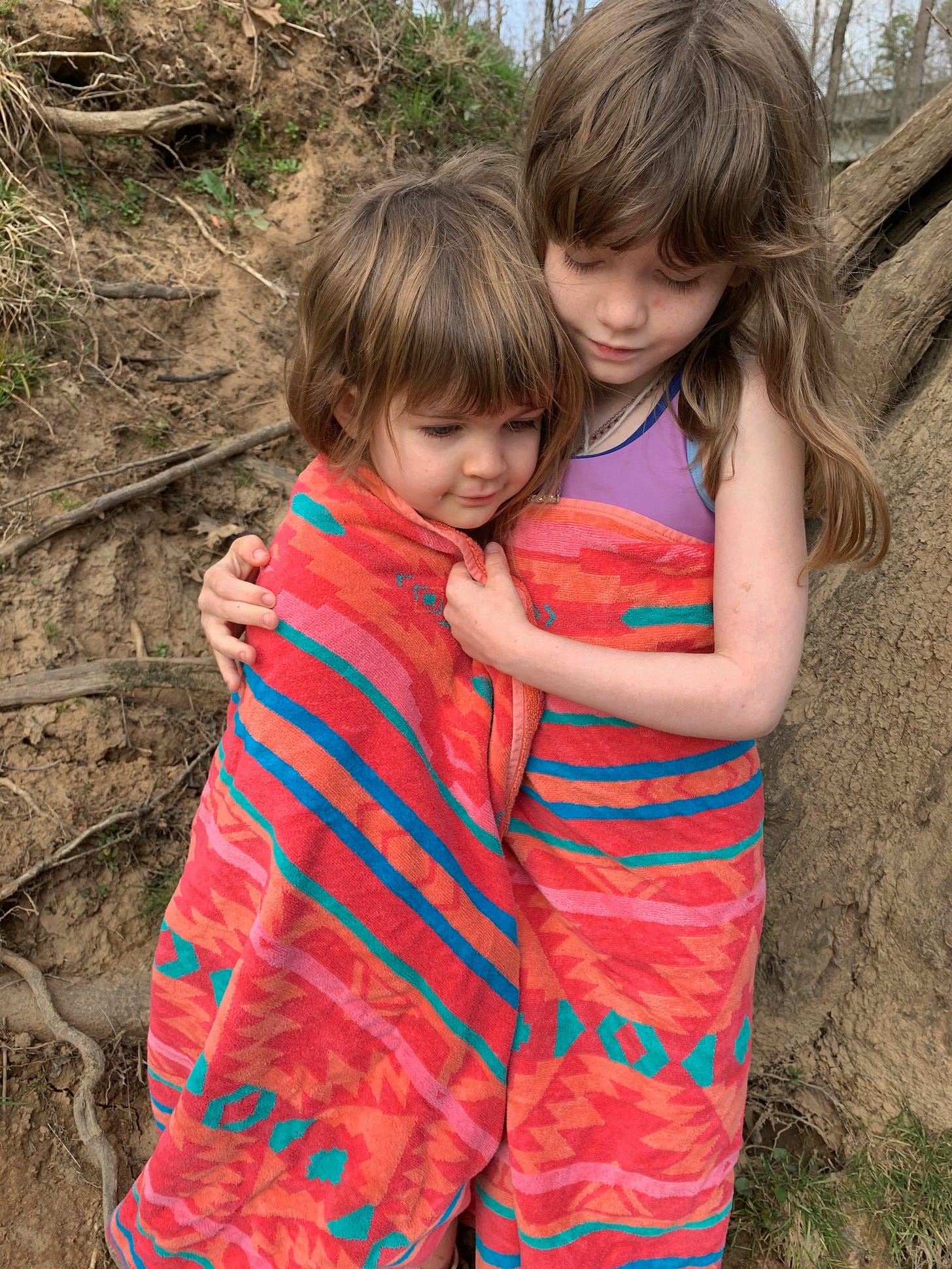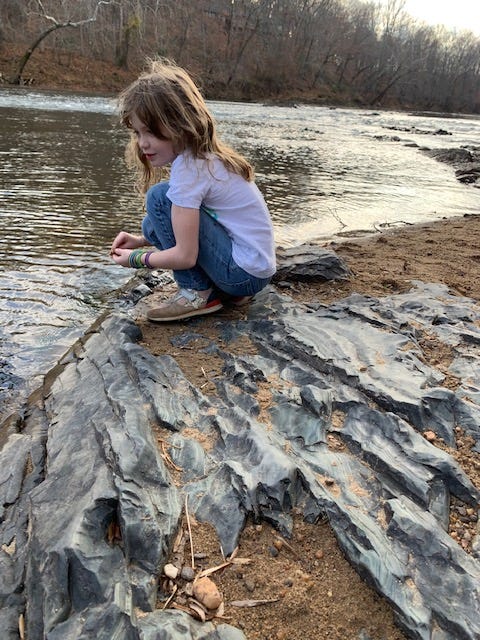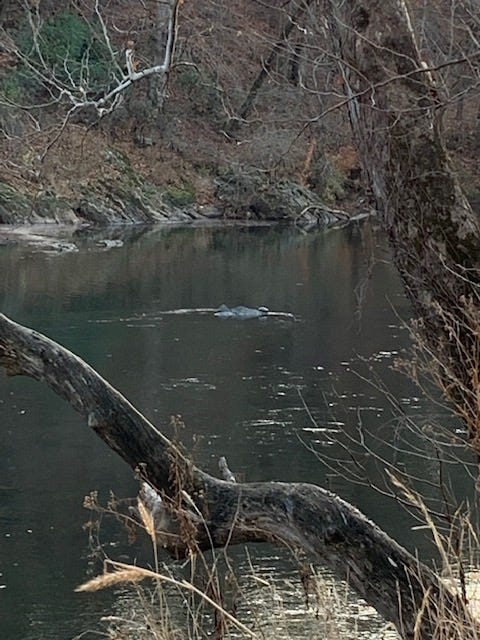In the years when I have my act together (so, not last year), I put together a photo calendar of the girls and their cousins for my mom. I take so many pictures that looking back through them takes a while, and it it always amazes me how much littler the girls were, just a year or less ago. I try to match the calendar posts with the month they were taken: snow (if we have any) in January, Harriet’s birthday in April, swimming in June and July.
The photo above doesn’t look like crisis. When I posted it to Instagram (a company that is hiding its impact on girls just a few years older than Bea), a friend commented, “Could they be any sweeter?” It is a sweet photo, from a fun day splashing in the Haw River… in March. That is not normal, or at least it wasn’t a few years ago.
The picture above is from yesterday—December 11. Bea and I went on an adventure hike along the river, and she asked to dip her hands in the water… because it was 74 degrees.
Then she took this photo, of a red-eared slider we spotted a little farther upstream:
They usually slip into the water at the slightest sound, but this one just sat there. Was it dead? Bea wanted to know. No, I said, it’s probably just sluggish because it should be hibernating. We looked it up later and learned that red-eared sliders don’t quite hibernate, but brumate, which is a passive state spent mostly in the mud, when the water is very cold (still breathing through their butts). The water isn’t very cold right now because of days like today, I said.
“Yeah, because of climate change,” Bea said.
That morning, we’d heard the news of the Kentucky tornadoes, which became more horrifying as the day went on and more details emerged. A factory flattened, a whole town in rubble, more than one hundred people feared dead. Twenty-two tornadoes sighted, including a single tornado that stayed on the ground for 227 miles. Rescuers are having trouble checking on people door-to-door because, as Kentucky Governor Andy Beshear said at a news conference, “in many of those homes, there’s no door anymore.”
Like swimming in March at our house, tornadoes are not normal for December in Kentucky. They depend on warm, humid air colliding with cool, dry air and typically form during thunderstorms in spring and summer. Friday’s storms were the worst in the state’s history, and it’s hard, given our record-setting-warm December, to see them as freakish anomolies separate from climate crisis.
Though it might not cause you to turn on your air conditioning, winter can have heat waves too. In fact, in 38 states, winter is the fastest-warming season. Warmer winters can feel nice (like yesterday), but they are extremely destructive, taking animals out of hibernation (or brumation), hurting crops, keeping disease-carrying insects alive, making allergy season longer, and prolonging the wildfire season.
And, potentially, causing more destructive storms—at times when we’re least expecting them. Last night we listened to American Routes on NPR, and right after Albert King’s “Tupelo (Pt. 1),” a song about a historic flood, the National Weather Service alarm sounded, warning of severe thunderstorms—the remains of the strong system that plowerd through Kentucky. I filled the bathtubs and got out candles.
We had some hard rain, but nothing more than that. This time.
Here are a few ways to help the tornado victims of Kentucky:
Donate to Team Western Kentucky Tornado Relief Fund/
Give blood at the American Red Cross.
See this spreadsheet of mutual aid and giving lists created by Appalachians for Appalachia.






